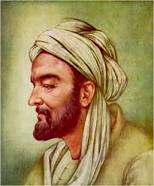The history of the world is full of innumerable masterpieces of scientists and their inventions, and one of the most famous and prominent scientists in the history is Bu Ali Sina who is not only considered to be the most significant philosopher in the Islamic tradition but is certainly the most influential philosopher of the pre-modern era (1500-1945).
About Bu Ali Sina:
“That whose existence is necessary must necessarily be one essence”
The striking muslim scientist Bu Ali Sina was born in the year 980, in Afshana near Bukhara in Central Asia. He is counted among the most highlighting scientists of the Islamic Golden Age that is considered to be a period of scientific, economic and cultural prosperity in the history of Islam. Since the Arabic language was a popular medium for the transmission of knowledge during this period, Ibn Sina studied Arabic.
As soon as he mastered Arabic (his mother tongue was Persian), his father got him a teacher for the Qur’an and another for literature, and before he was ten years old he knew a considerable amount of the Qur’an and literature. He then developed an inclination towards philosophy, geometry and mathematics. He also studied fiqh (Muslim law) and the Sufism movement, and was soon led away by one of his teachers from preoccupation with law and Sufism in favor of theoretical studies and philosophical studies that later played a role in some of the premodern inventions.
Through his philosophy he tried to create a coherent and comprehensive system that would suit the religious needs of Muslim culture and his metaphysics became the basis of discussions of Islamic philosophy and philosophical theology.
Throughout his whole life he kept himself engaged not only in creating the ease for Muslim population but his work also assisted the other people too . At last, he passed away on 22 June, 1037 (aged 56–57) at Hamadan in Kakuyid dynasty.
Bu Ali Sina’s contribution and impact towards Science:
Bu Ali Sina made the most remarkable inventions in the field of science which not only provided convenience to the people of that time but also a source of comfort and health to the people of today. Bu Ali Sina(commonly known as Avicenna) is one of the most famous and influential scientists in the history of medicine.
Among his most famous books, “The Canon of Medicine” summarizes all the medical knowledge of his time. Ibn Sina has written a whole section about kidney calculi in his book. In total, 65 herbal, 8 animal and 4 mineral drugs are mentioned in the Canon of Medicine as useful drugs for dissolving, removing and preventing kidney calculi.
Ibn Sina introduced very advanced drug designing based on drug delivery, organ targeting, accumulation at the site of action, pain control, wound healing, post-procedure clearance, and organ support. Along with it, Avicenna’s explanation of heart diseases was logically presented perhaps for the first time in the history of medicine.
Avicenna was the first to describe carotid sinus hypersensitivity, which presents with vasovagal syncope. He was a pioneer of pulsology and the first accurate description of the pulse was given by Avicenna, when he refined Galen’s theory of the pulse. In addition, he discussed in detail the effect of available drugs on the heart and mentioned their indications and contraindications.
Finally, he made important contributions to cardiology that are still the considered as the basis of most of the heart treatments. His other important contributions included advances such as the recognition of the infectious nature of phthisis and tuberculosis. Distribution of diseases through water and soil, and interactions between psychology and health.
In addition to describing pharmacological methods, the book described 760 drugs and became the most authoritative materia medica of the period. He was also the first to describe meningitis and made major contributions to anatomy, gynecology and child health. Using Avicenna’s ideas helps scientists choose better drugs with historical background to reduce the cost of treatment and research projects.
Along with the “Canon of Medicine” his philosophical encyclopedia “Kitab al-Shifa” was a monumental work, embodying a wide range of knowledge from philosophy to science. He classified the entire field as follows: theoretical knowledge: physics, mathematics and metaphysics; and practical knowledge: ethics, economics and politics. His philosophy combines the Aristotelian tradition, Neoplatonic influences and Muslim theology.
Besides making contributions to general science and medicine, he also introduced some new aspects in the fields of mathematics and music. In short, Bu Ali Sina played his best role in introducing the basis of many scientific processes and because of all his work and grant to various fields he was awarde by the titles of Sharaf al-Mulk, Hujjat al-Haq and Al-Sheikh al-Ra’is and mist prominently the Avicenna.
Conclusion:
In summary, we can say that Avicenna was not a prominent figure during the pre-modern period, but his inventions and his studies are the source of many inventions in the modern era as well. His work is still remembered around the world and will always be a source of inspiration for generations to come.
May his soul rest in peace‼
By: Haleema Younas
Write and Win: Participate in Creative writing Contest & International Essay Contest and win fabulous prizes.
















